Mummies Of The World November 2010
Mummies of the World, the largest traveling exhibition of mummies ever assembled, presents a never-before-seen collection of both accidental and intentionally preserved mummies, presented with reverence and dignity. The collection includes ancient mummies and important artifacts from Asia, Oceania, South America and Europe as well as ancient Egypt, dating as far back as 6,500 years.
Through engaging interactive exhibits, Mummies of the World illustrates how current science tools enable us to study mummies in new and non-invasive ways, allowing unprecedented insights to past cultures and civilizations. The exhibit will reveal how the scientific study of mummies provides a window into the lives of ancient peoples from every region of the world.
Thanks to Bob Duda for several of the pictures in this collection!
For Nick... The California Science Center Mummies Learning Guide (pdf)
We Met The Duda's In Norwalk And Proceeded To The LA Farmer's Market
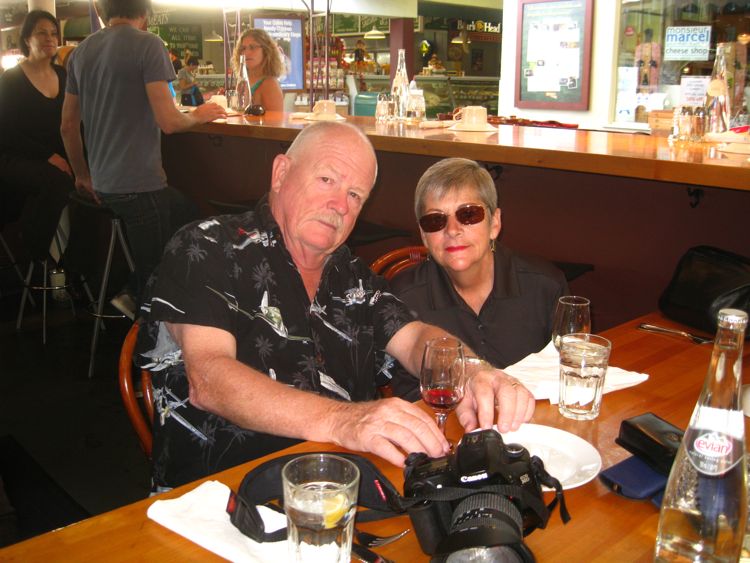
We were there! Thanks to Bob!

Thumbs up!

The birthday boy

The waiter was excellent

What a pair


Nick and Robin
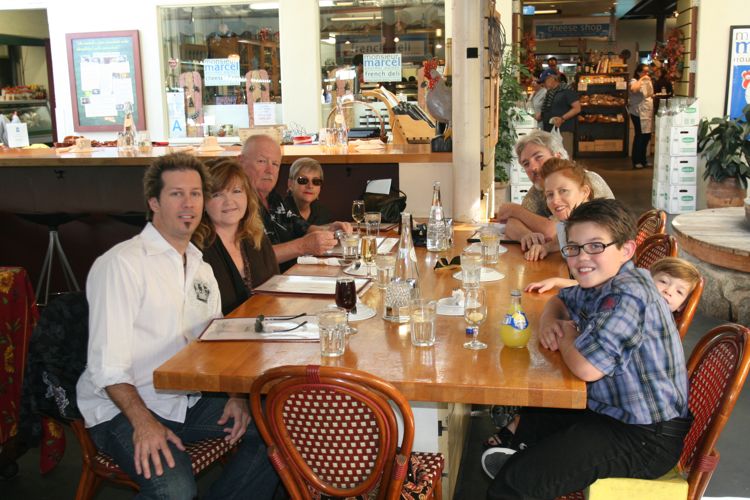
Hey... We are all here!!

Howdy Theo

Explanation in progress

Dr. Nick... at your service
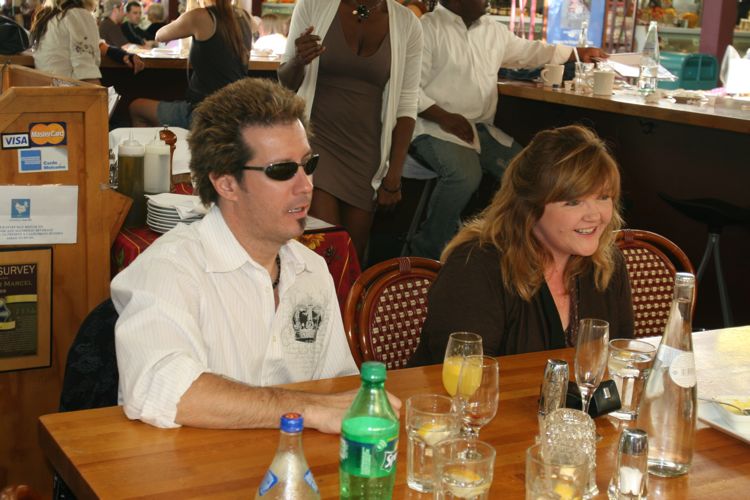


Sue went shopping

Yes!!! To the gills!
Mummy Mummy, Where Are You??

We arrive after a short drive across town!

Which way do we go??

"Hurry up... We don't want to miss them!"



We got our tickets on-line
We Walked Around For A While As We Were A Bit Early

Great entrance

A Hurricane machine
Did you know? - A hurricane is a tropical cyclone, occurring in the North Atlantic Ocean or the Northeast Pacific Ocean, east of the International Dateline. The word hurricane, used in the North Atlantic and Northeast Pacific, is probably derived from the name of a Mayan storm god, Huracan, via the Spanish, huracán.
Huracan is also the source of the word Orcan, another word for a European windstorm. Another possible source is Hyrrokkin, a Jotun or giantess in Norse mythology, called upon by the Aesir to launch the ship bearing the body of the god Balder, which was too heavy for even the gods to move.
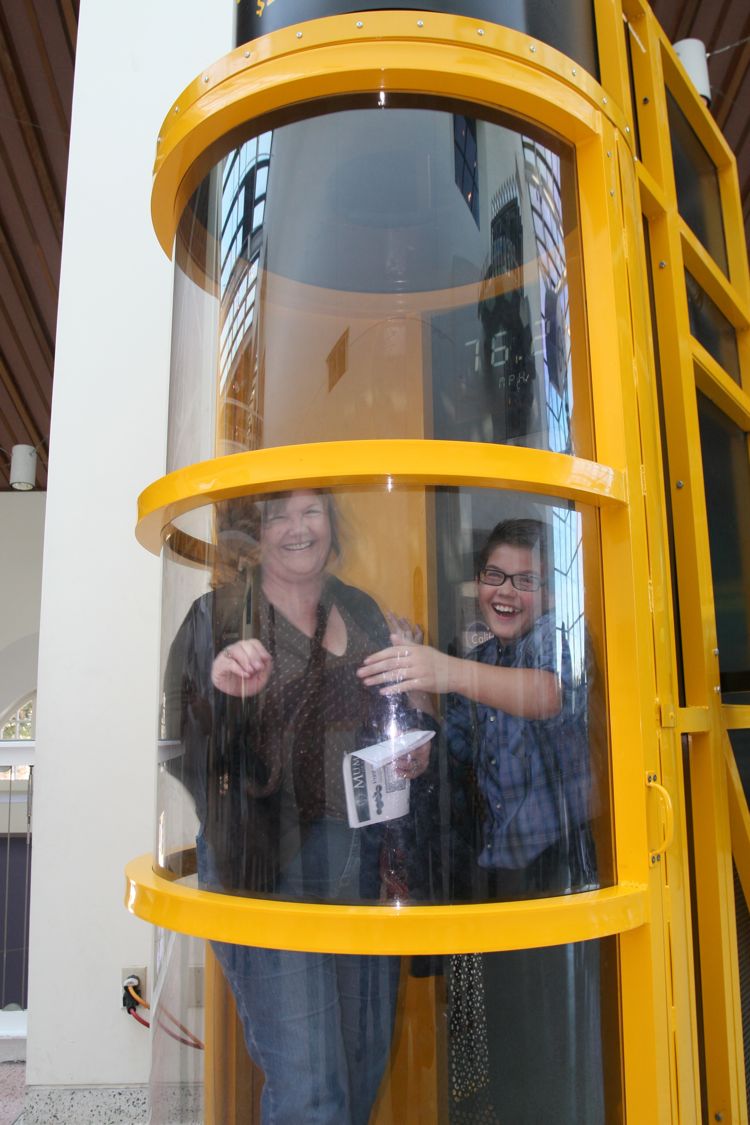
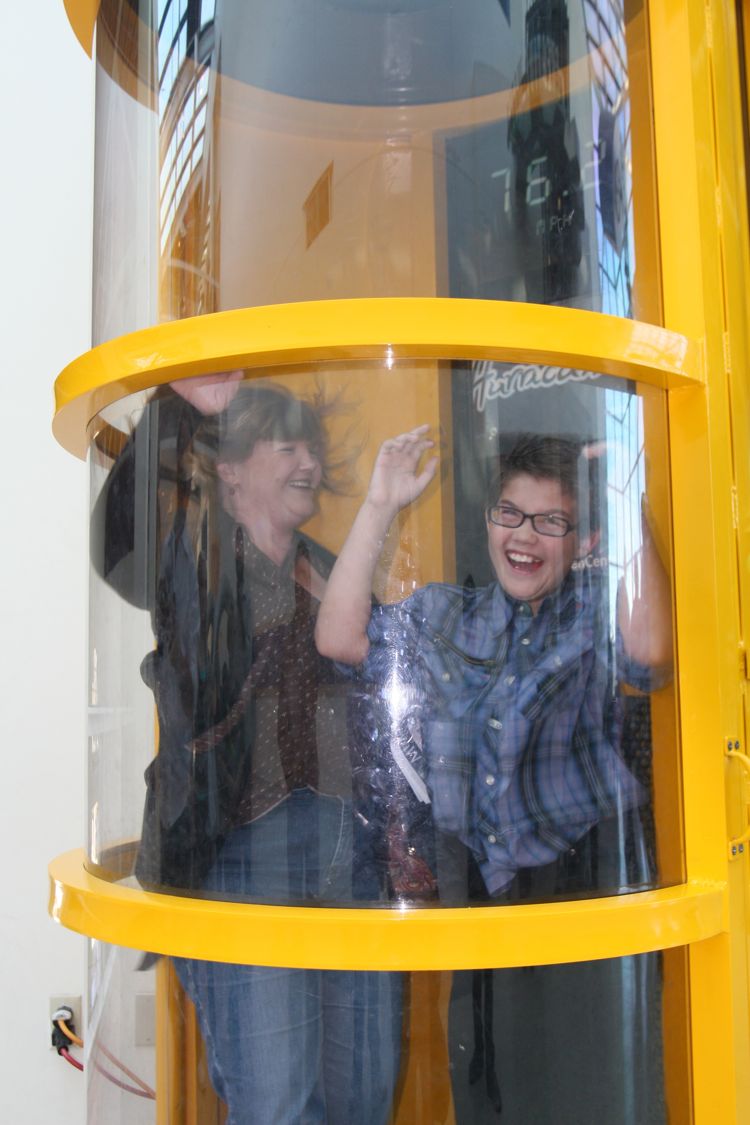
80 mph inside!


The simulator was amazing

Did you know? - A motion simulator or motion platform is a mechanism that encapsulates occupants and creates the effect/feelings of being in a moving vehicle. Motion simulators fall into two categories (described below) based on whether the occupant is controlling the vehicle, the more common case for a system described as a simulator; or if the occupant is a passive rider, also referred to as a simulator ride or motion theater.

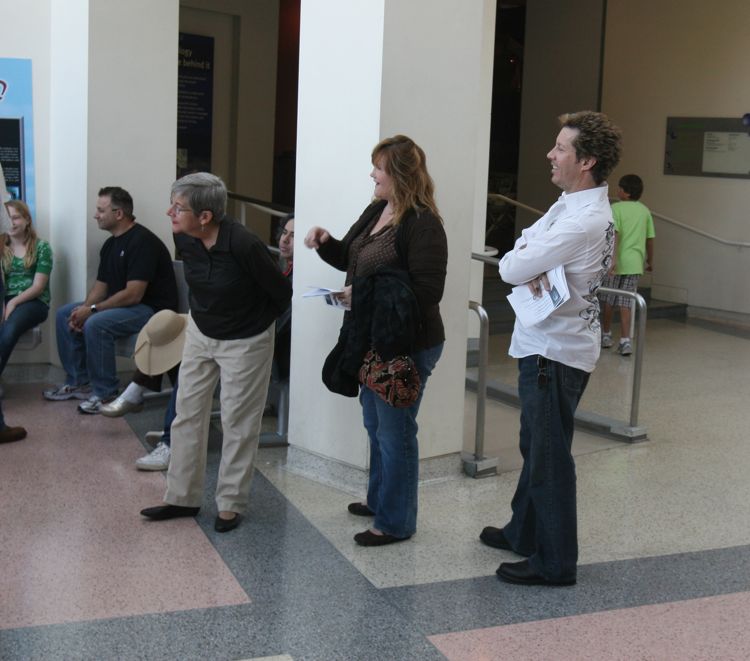
"There he is!"



We knew we were hot!!!

OK, Paul is a hot head!!!
Did you know? - Infrared (IR) light is electromagnetic radiation with a wavelength between 0.7 and 300 micrometers, which equates to a frequency range between approximately 1 and 430 THz. The name means below red, the Latin infra meaning "below". Red is the color of the longest wavelengths of visible light. Infrared light has a longer wavelength (and so a lower frequency) than that of red light visible to humans, hence the literal meaning of below red.


Light plays funny tricks on people

The Rose Garden is right next door!

Did you know? - The Exposition Park Rose Garden is a historic 7-acre (28,000 m2) sunken garden located in Exposition Park in Los Angeles, California. It has been called "one of the city's best-kept secrets." It was added to the National Register of Historic Places in 1991.
From 1871 to 1911, the site of the rose garden was part of the city's Agricultural Park. The rose garden area was then used for horse, camel, dog, and later automobile racing; it also reportedly housed the city's longest bar and "one of its most stylish brothels." In 1914, the city announced plans to construct a wildflower garden at the park, but the rose garden was not built in 1927 with the planting of 15,000 bushes of more than 100 varieties. When the garden was announced, the Los Angeles Times applauded the project: "No more fitting tribute could be paid to the spirit of Southern California than to erect in the center of her largest city the greatest rose garden in the world." During the Great Depression, the lack of funding threatened the closure of the rose garden, then described as "the largest rose garden in the world."
Time To See The Mummies

"Line? What line?
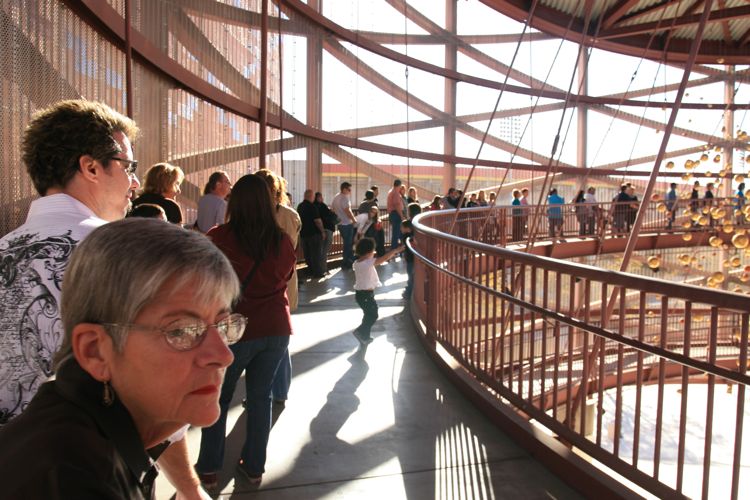
Time to visit

... and visit some more!
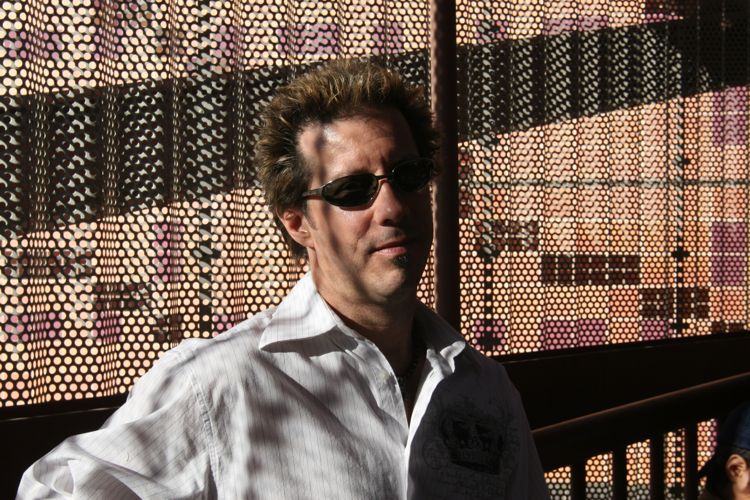
Birthday boy

Birthday boy needs to ride the bike

Almost there
We Honored Their Request Of No Photography...

Did you know? - "Mummies of the World" is the largest traveling exhibition of mummies ever assembled. Beside human mummies, there is a mummified bog dog, lizard, fish, rat, hyaena, cat, squirrel, falcon and a howler monkey from Argentina.

Did you know? - The Orlovits family was with a group of mummies found in 1994 in a forgotten church crypt in Vac, Hungary. And Baron von Holz was a 17th-century nobleman who apparently died during the Thirty Years' War in Sommersdorf, Germany.

Michael Orovitz

Veronica Orlovits, who lived some 200 years ago, is dressed in a replica of the gown she was buried in in a church crypt in Vac, Hungary. Also in the exhibition are her husband Michael and their baby son Johannes Orlovits.

6,500 year old mummy from Peru
Did you know? - More than 6,500 years ago in Peru, this tiny baby's brief battle for life finally came to an end. The child, no more than 10 months old, had a serious heart defect and suffered from growth problems. After contracting pneumonia and then suffering circulation failure the sick child died and was wrapped in linen and buried with an amulet hung around its neck. Now the baby's mummified corpse, known as the Detmold child, is to go on display in the biggest exhibition of mummies in the world.

Did you know? - A mummy is a corpse whose skin and organs have been preserved by either intentional or incidental exposure to chemicals, extreme coldness (ice mummies), very low humidity, or lack of air when bodies are submerged in bogs.
Presently, the oldest discovered (naturally) mummified human corpse was a decapitated head dated as 6,000 years old and was found in 1936. The most famous Egyptian mummies are those of Seti I and Rameses II (13th century BC), though the earliest known Egyptian mummy, nicknamed 'Ginger' for its hair color, dates back to approximately 3300 BC.

A South American woman with a tattoo on each breast and one on her face
Did you know? - Mummies of humans and other animals have been found throughout the world, both as a result of natural preservation through unusual conditions, and as cultural artifacts to preserve the dead. There are more than 1000 mummies in dry Xinjiang China. Over one million animal mummies have been found in Egypt, many of which are cats. There are so called mummies of mythical beings.

Mummies tell stories
Did you know? - The English word mummy is derived from medieval Latin mumia, a borrowing of the Persian word mūm (موم) , which means "bitumen". Because of the blackened skin bitumen was once thought to be used extensively in ancient Egyptian embalming procedures

We saw the movie after leaving the museum
The Museum Closes At 5:00 So We Only Had A Few Minutes To Explore

Downtown LA from the third floor
Did You Know? - Ecosystems - The newest exhibit gallery is now open! Explore the varied ecosystems of land and sea, and discover how the physical and living worlds are connected and shaped by the same fundamental ecological principles. Ecosystems invites you to explore environments that range from the most ordinary and domestic to the most remote and inhospitable. Investigate the gallery’s eight Zones, each of which illustrates a different ecological principles.

Extreme Zone - Discover how even in the harshest environments, species adapt to their surroundings.

Delivering supplies to the North Pole

"Eek!!!!"
Forest Zone - Learn about the sources and importance of biodiversity in ecosystems.
River Zone - Investigate the ways flowing fluids carry energy and matter from place to place.
Island Zone - Look at how isolation reveals the processes of evolution.

Ew!!
Did you know? - Giant wetas are species of weta in the genus Deinacrida of the family Anostostomatidae. Giant wetas are endemic to New Zealand, and are examples of island gigantism. There are 11 species of giant weta, most of which are larger than other weta, despite the latter already being large by insect standards. Large species can be up to 10 cm (4 in) not inclusive of legs and antennae with body mass usually no more than 35g. One captive female reached a mass of about 70 g (2.5 oz), making it one of the heaviest documented insects in the world and heavier than a sparrow.

Rot Room - See how rot and decomposition release nutrients that nourish life.

Global Zone - Focus on the ways living and physical systems interact on a global scale.

Bob is interested, it looks like food!
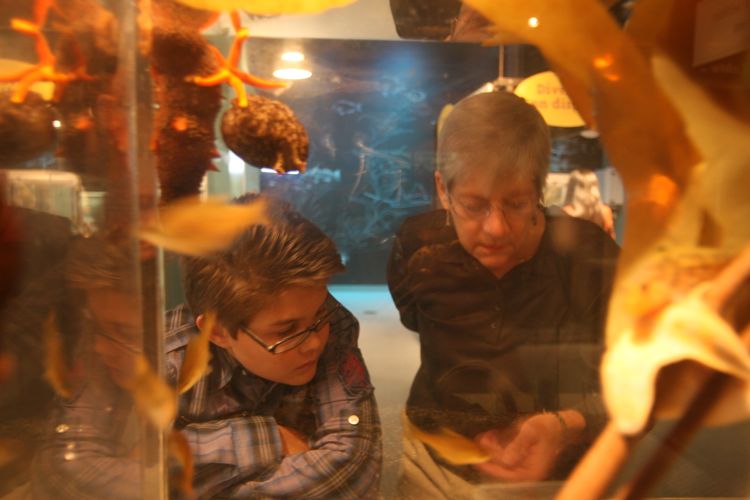
Wonder what they found??


"Hey little fishy!"

Bob wants THAT lobster for dinner

Jelly fish
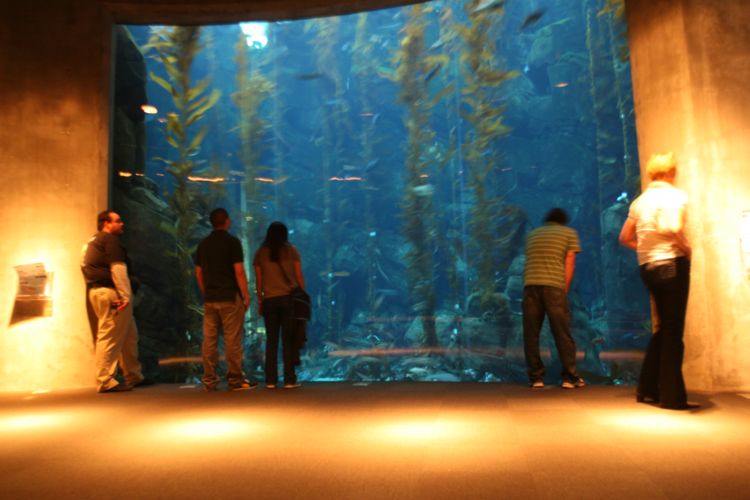
Great displays on the 2nd floor!

Dinner is served

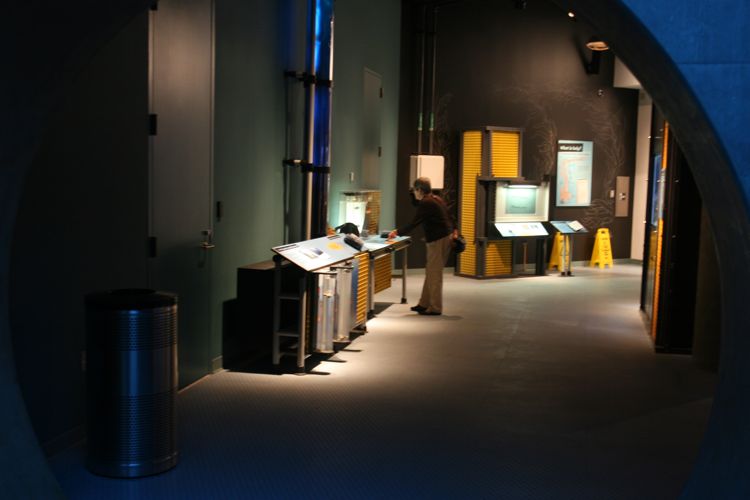
Studying kelp

Holdfast
Did you know? - A holdfast is a root-like structure that anchors aquatic sessile organisms, such as seaweed, other sessile algae, stalked crinoids, benthic cnidarians, and sponges, to the substrate.
Holdfasts vary in shape and form depending on both the species and the substrate type. The holdfasts of organisms that live in muddy substrates often have complex tangles of root-like growths, while those of organisms that live in sandy substrates are bulb-like and very flexible, such as the holdfast of sea pens, allowing the organism(s) to pull the entire body into the substrate when the holdfast is contracted.
The holdfasts of organisms that live on smooth surfaces (such as the surface of a boulder) have the base of the holdfast literally glued to the surface. The organism derives no nutrients from this intimate contact with the substrate, primarily because if the organism attempted to extract nutrients enzymatically from the substrate, the substrate would be eroded away, thereby increasing the risk of falling off of the substrate.
L.A. Zone - Learn about the ecological challenges faced by urban ecosystems when it comes to water, waste, energy and wildlife.

Nick makes waves
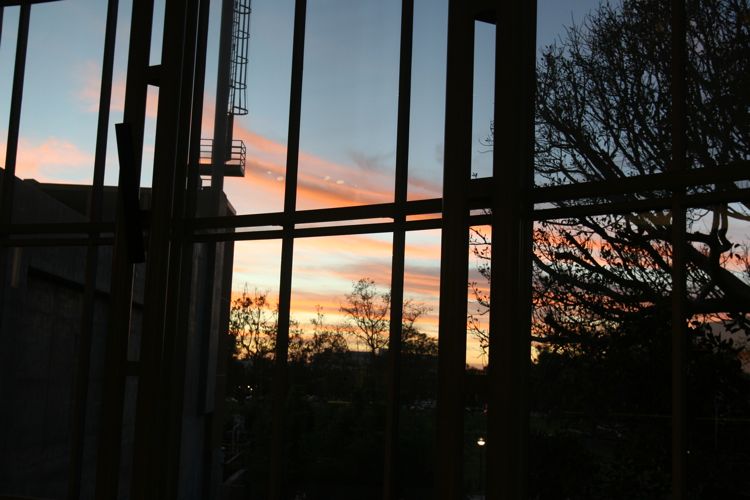
Super sky but time to go to the movies

Mummies 3D: Secrets of the Pharaohs (May 25, 2007)

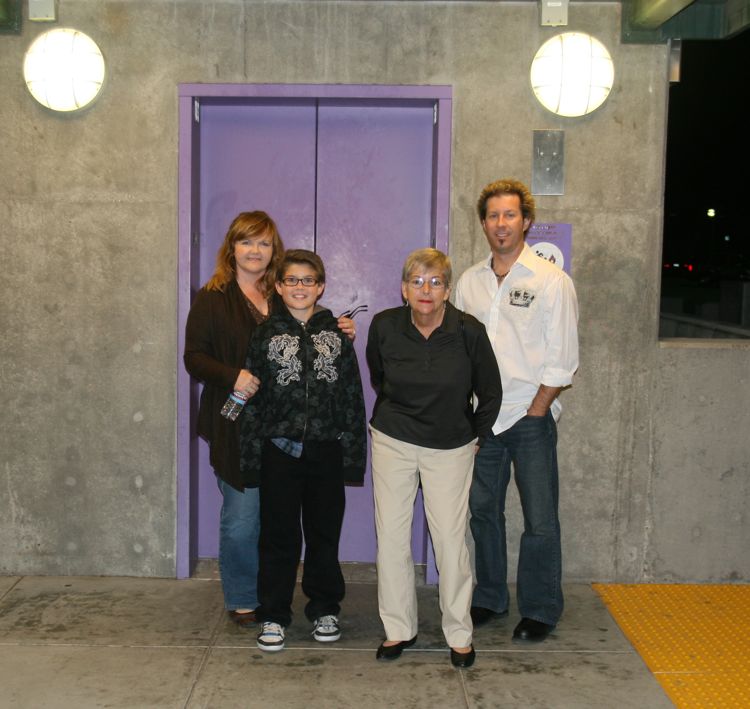
Time to go home... and dance at the Santa Ana Elks... The night is young!!
